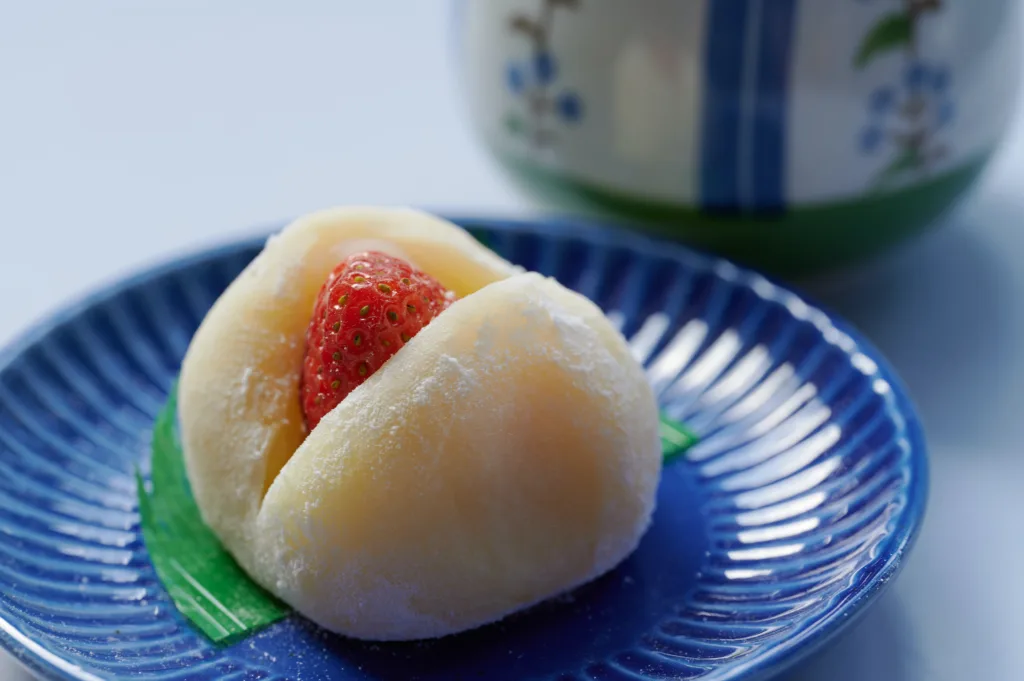If you’re a fan of Japanese cuisine, you’ve probably heard of mochi. This chewy, sweet, and sticky treat has become increasingly popular around the world, but many people struggle with the pronunciation. In this article, we’ll cover how to pronounce mochi correctly, as well as its history and how to make it at home.
How to Pronounce Mochi
First things first: how do you pronounce mochi? The correct pronunciation for mochi (もち, 餅) is “moh-chee,” with the emphasis on the first syllable. Some people mistakenly pronounce it as “moh-key” or “moh-shee,” but those are incorrect.
If you’re still having trouble, think of the “ch” sound in English words like “chew” or “choose.” In Japanese, the “ch” sound is often used instead of a “t” or “ts” sound. So when you say mochi, it’s like saying “moh-tee” but replacing the “t” with a “ch” sound.
What Does Mochi Taste Like?
Mochi has a unique taste and texture that sets it apart from other types of sweets. The flavor of mochi is subtle and sweet, with a mild rice flavor. The texture is soft and chewy, with a slightly sticky and elastic texture.
When mochi is stuffed with sweet fillings such as red bean paste or fruit, it adds a burst of flavor to the already delicious treat. The filling also adds a contrast in texture, with the soft and chewy mochi exterior giving way to a smooth and creamy center.
Mochi can also be flavored with a variety of ingredients such as matcha powder or cocoa powder to give it a unique taste. Some mochi is even made with savory fillings such as pork or cheese, providing a completely different flavor profile.
Overall, mochi has a flavor and texture that is both delicious and unique. Whether enjoyed on its own or as part of a larger dish, mochi is a treat that’s worth trying for anyone with a sweet tooth.
Mochi Varieties
There are many different types of mochi, each with its own unique flavor and texture. Here are a few popular varieties:
- Daifuku: A small, round mochi stuffed with sweet filling, such as red bean paste or fruit.
- Ichigo daifuku: Similar to daifuku, but with a whole strawberry inside.
- Mochi ice cream: A popular treat that combines mochi with ice cream filling.
- Zenzai: A hot soup made with mochi, sweet red bean paste, and sometimes green tea


Enjoying Mochi
Mochi can be enjoyed in many ways, depending on personal taste and preference. Here are some popular ways to enjoy mochi:
- As a snack: Mochi can be eaten on its own as a sweet and chewy snack.
- In soup: Mochi can be added to soups or stews, such as the traditional Japanese dish ozoni.
- Grilled or fried: Grilling or frying mochi gives it a crispy texture on the outside while still retaining its chewiness on the inside.
- With ice cream: Mochi ice cream is a popular treat that combines the sweet and chewy texture of mochi with creamy ice cream filling.
- In sushi: Mochi can be used as a filling in sushi rolls, such as in the popular dish inari sushi.
Mochi: A Brief History
Mochi has been a staple in Japanese cuisine for centuries, with records of its consumption dating back to the 9th century. It was originally made as an offering to the gods and was considered a symbol of good luck and prosperity.
Over time, mochi became a popular food for celebrations, especially during the Japanese New Year. Today, it’s enjoyed throughout the year in a variety of forms, from traditional sweets to savory dishes.
Making Mochi: A Step-by-Step Guide
Mochi is made from glutinous rice, which is ground into a paste and then molded into various shapes. Here’s how to make mochi at home:
Ingredients:
- 2 cups glutinous rice flour
- 1 1/2 cups water
- 1/2 cup sugar
- Cornstarch or potato starch (for dusting)
Equipment:
- Steamer
- Mixing bowl
- Wooden spoon
- Large, shallow pan
- Plastic wrap
Instructions:
- In a mixing bowl, combine the glutinous rice flour and sugar.
- Slowly add the water to the mixture, stirring continuously until it forms a smooth, sticky dough.
- Cover the dough with plastic wrap and steam it in a steamer for 20-30 minutes, until it’s cooked through.
- Once the dough is cooked, transfer it to a large, shallow pan and knead it with a wooden spoon until it’s smooth and pliable.
- Dust your hands and work surface with cornstarch or potato starch to prevent sticking.
- Pinch off small pieces of dough and shape them into balls or other desired shapes.
Tips for Making Mochi
- Don’t overcook the dough or it will become too hard to work with.
- Use cornstarch or potato starch to prevent the dough from sticking to your hands and work surface.
- You can add food coloring or flavorings to the dough for variety.
- Mochi is best eaten fresh, but it can be stored in the refrigerator or freezer for later use.
Final Thoughts
Mochi may be a little tricky to pronounce at first, but once you get the hang of it, you’ll be able to enjoy this delicious treat with confidence. Whether you’re making it at home or trying it at a Japanese restaurant, mochi is a versatile and tasty food that’s sure to please. So go ahead and give it a try – you won’t be disappointed!

